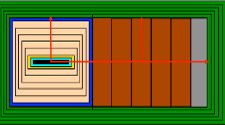
The implications for waste form design, waste packaging and repository design, were examined by looking at our current understanding of processes that could influence the long-term performance of a repository.
The Environment Agency recently issued a report prepared by Quintessa that explores the factors that might influence the long-term safety of an underground repository to dispose of high-level radioactive waste (HLW) and spent fuel (SF).
This project explored current understanding of what controls the performance of different repository designs for HLW and SF disposal, focusing on the role of the engineered barrier system (EBS).
The report sets out an approach to analysing key controls on repository performance, along with an analysis of different types of disposal systems.
The project carried out a literature review of disposal systems proposed by radioactive waste management programmes throughout the world, choosing some representative disposal concepts to illustrate the range of controls on performance. It also reviewed safety functions attributed to different components of the EBS, and identified groups of features, events and processes (FEPs) that describe these safety functions and threats to these safety functions. Simple computational models (see Figure) were used to explore the significance of each of these FEPs as controls on the performance of barrier components.
Copies of the report and a two-page summary can be downloaded from the UK Government website.